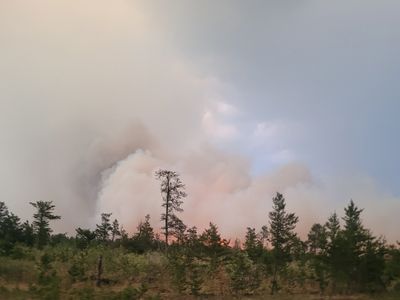Local News
Trapped in a Moving Ambulance: MAHCP calls for safety reform after shocking EMS assault
On Monday morning of this week, Winnipegosis RCMP received a request to assist Emergency Medical Services during a patient transport from Pine Creek First Nation to a hospital in Dauphin. The police report stated that the RCMP were alerted by paramedics that the 38-year-old male patient, in the back of the ambulance, had assaulted one of them with a pair of shears. The RCMP officer met the ambulance on Highway 20, north of Winnipegosis. But when the officer opened the back of the ambulance, the male was still in possession of the weapon, and despite continued requests to drop the weapon, he did not comply. The male then aggressively approached the officer with the shear, and a Conducted Energy Weapon (CEW) was deployed but had no effect. Still armed with the pair of shears, the male fled and began walking northbound on Highway 20. 'As vehicles slowed and eventually stopped at the scene, a female exited the passenger side of one of the stopped vehicles and the suspect entered the vehicle and began assaulting the driver with the weapon, with a child in the backseat,' the report read. 'The officer along with the female passenger and the male driver, managed to restrain the suspect inside the vehicle, and the weapon was confiscated by police. Despite this, the suspect continued to physically fight. The suspect then got out of the vehicle and aggressively approached the officer. A 40mm extended range impact round (a non-lethal weapon) was deployed which had no physical effect on the suspect. A second officer then deployed a CEW, which was successful, and police were able to apprehend the suspect.' The male was transported to hospital and evaluated by medical staff and was then released back into RCMP custody. The Manitoba Association of Health Care Professionals (MAHCP) issued the following statement following this violent attack on EMS staff in response to the June 28th attack: '[This] violent incident involving a patient and our paramedics is horrifying, but it’s a daily reality for first responders. The thought of being trapped in a box, travelling at high speeds down a highway, and trying to pull over to wrestle a pair of shears from a patient for whom you were just providing care, is unimaginable for most of us. The outcome could have been tragic, and the psychological impact of this kind of threat is long-lasting for our members. “Although we’re very grateful for the swift actions of our paramedics and the help from law enforcement, the patient, our members, and innocent bystanders were all at serious risk,” said Tanya Burnside, Vice President, MAHCP. “We hear from our members regularly about the violence they face on the job, and clearly, changes to safety protocols are long overdue.” Meanwhile, Shared Health is required by the Manitoba Workplace Safety & Health Act to report on workplace violence annually. Violent incidents in Manitoba hospitals and health-care facilities have not been tracked since 2019, and earlier this year, MAHCP confirmed the same is true for violent incidents involving rural paramedics. Reminder: Tracking and reporting are not just ‘helpful tools’; this is the law. Without data, how can health-care employers expect to properly mitigate risks? “This violent attack on paramedics is absolutely intolerable. They did everything right while providing care, following protocol, and still found themselves in a terrifying situation,” said Rebecca Clifton, MAHCP Labour Relations Officer & Administrative Director, Paramedic Association of Manitoba. “No one should fear for their life while trying to save someone else’s. Paramedics, along with all first responders, deserve better protection and more respect.” Employer responses to violent incidents often seems to be driven by damage control rather than addressing actual risks. Law enforcement is not always going to be readily available to defuse dangerous situations. Our government must enforce proper reporting requirements for all health-care facilities and programs and collaborate with first responders and applicable organizations to address the violence.






